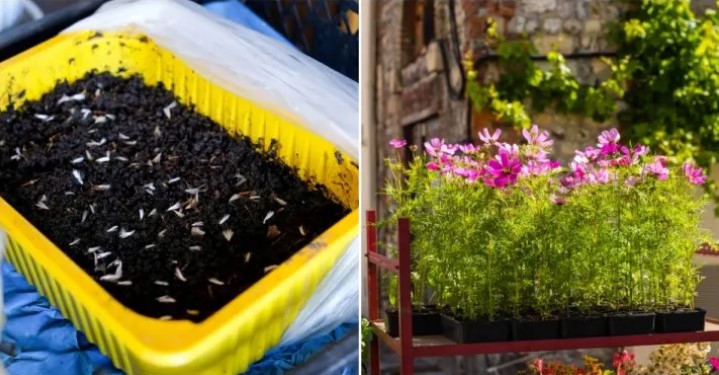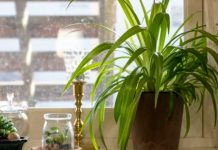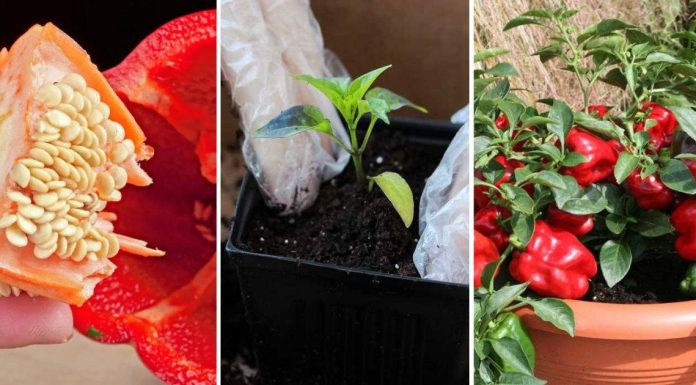Getting a good head start on sowing spring and summer flowering annuals is the best way to make the seasonal color last longer without breaking the bank.
Certain seeds can be sown as soon as 10-12 weeks before the last frost date in your area, either indoors or in a greenhouse. Here, they are protected from a cold snap and ready for planting into the garden when spring arrives.
Before you choose what to sow indoors, it’s important to know when the all-important last frost date is for your particular area. Once you have that, it’s easy enough to calculate when you can begin, whether that be January, February or even March.
 What You Need To Sow Seeds Indoors
What You Need To Sow Seeds Indoors
Containers
 You will need something to start seeds, such as seed trays, propagators, or plastic pots. You can also use recycled containers from the kitchen – such as yoghurt pots – with holes punched in the bottom for drainage.
You will need something to start seeds, such as seed trays, propagators, or plastic pots. You can also use recycled containers from the kitchen – such as yoghurt pots – with holes punched in the bottom for drainage.
Any of these will do, as long as they hold the germination medium and drain freely.
Growing Medium
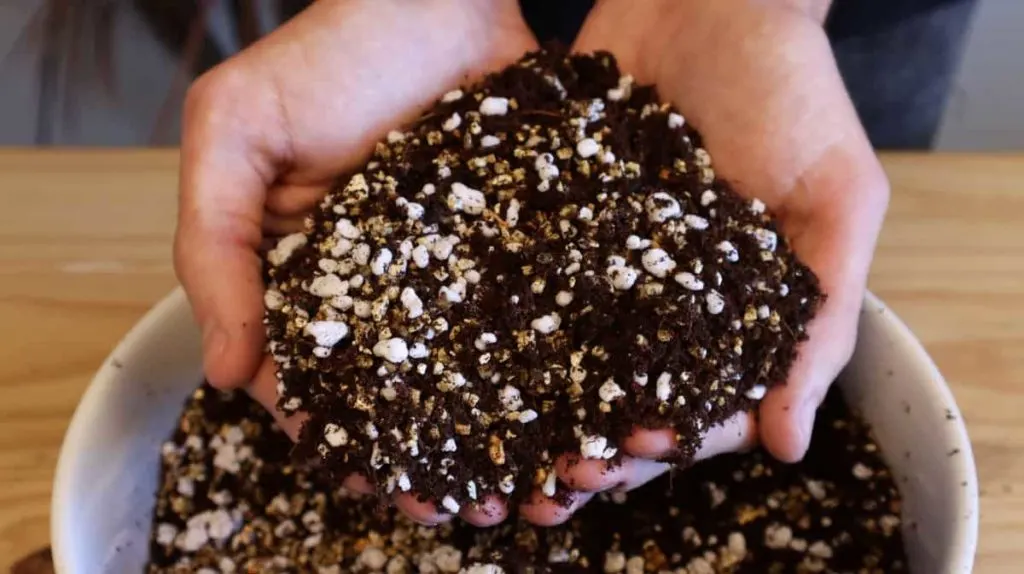 There are many soil options for seed starting. Anything from multipurpose compost to specialized germination or seed starting mixes are available at your local nursery.
There are many soil options for seed starting. Anything from multipurpose compost to specialized germination or seed starting mixes are available at your local nursery.
Water
 Add water to the germination mix before adding to seed trays to sow. The mix should be moist but not waterlogged.
Add water to the germination mix before adding to seed trays to sow. The mix should be moist but not waterlogged.
Cover
 While not essential, a cover over your seeds will keep the seeds warm and moist for longer periods, improving the chances of germinating.
While not essential, a cover over your seeds will keep the seeds warm and moist for longer periods, improving the chances of germinating.
Specialized propagators come with lids that you pop on. Or, you can add your own by covering the tray with a clear plastic bag supported with skewers. Leave enough space for airflow and secure to the seed tray or container with an elastic band or tape.
Heat
Many seeds will not germinate without heat.
Indoors, heat can be supplied by investing in seed starting heat mats that provide constant, gentle heat to the seeds. Pop your trays onto the mats and make sure they don’t dry out.
Light
When growing indoors, the light from a nearby window may not be sufficient for your chosen seeds.
To combat this problem, you will need either LED or fluorescent lights designed for growing plants indoors.
The standard bulbs we use for indoor lighting are not bright enough to get the job done. Look for ‘full spectrum’ or ‘broad spectrum’ lights that have a balance of blue and red light. This is the closest to sunlight manufacturers can make them.
 Cool blue light promotes leafy green foliage but also keeps plants short and stocky. Warm red light promotes vegetative growth and flowering but also makes taller and lankier plants.
Cool blue light promotes leafy green foliage but also keeps plants short and stocky. Warm red light promotes vegetative growth and flowering but also makes taller and lankier plants.
A full spectrum light is the closest to daylight and should have a kelvin rating of 5000 – 6500K. The number of lights needed can be calculated using lumens. Seedlings require about 2000 – 3000 lumens per square foot of space, so the more seeds you want to grow indoors, the more lighting is required.
LEDs can burn plants if placed too close (a foot or higher is best), but fluorescents work better when placed closer – 4 or so inches above the seeds. Some manufacturers will specify the optimum height.
Germinated seedlings need at least 12 hours of good light per day and 8 hours of darkness to rest.
How To Sow
 Once your growing medium is in a tray, sow the seed on top of the soil and cover to the required depth on the seed packet.
Once your growing medium is in a tray, sow the seed on top of the soil and cover to the required depth on the seed packet.
Some seeds are sown on top of the soil without covering. These are ones that require light to germinate. Other seeds need darkness to germinate and will require covering.
If you are using trays with cells, plant 2-3 seeds in one cell to give a better chance of success. Thin out if necessary once they have grown a few inches tall.
Spray the seeds with a fine mist water sprayer rather than pouring over water which could wash the seeds into a clump. Keep the seeds moist and check them daily.
Label the seeds with the name of the plant and the date so you can track their progress.
12 Flower Seeds To Sow Before Spring
 These are just some of the flowering annuals to start indoors for a bountiful spring and summer garden.
These are just some of the flowering annuals to start indoors for a bountiful spring and summer garden.
1. Phlox
 There is a type of phlox for all parts of a garden, from groundcovers to medium height and tall varieties.
There is a type of phlox for all parts of a garden, from groundcovers to medium height and tall varieties.
The annual phlox variety, Phlox drumondii, is medium height and comes in an array of colors from blue, white, pink, purple and red.
Phlox are drought tolerant and attract pollinators. They can be grown in full sun with some afternoon shade in zones 2-11. Start seed indoors 6-8 weeks before the last frost date.
2. Alyssum
 The beautifully scented Lobularia maritima is a perfect filler for pots, hanging baskets, and flower beds. Masses of flowers appear in a range of colors from pure white to dark purple.
The beautifully scented Lobularia maritima is a perfect filler for pots, hanging baskets, and flower beds. Masses of flowers appear in a range of colors from pure white to dark purple.
Sow seed indoors 6-8 weeks before the last frost date. Sweet alyssum takes only 6-8 weeks to bloom and continues right into autumn. These plants are best for zones 5-9.
3. Cosmos
 Cosmos are great cottage garden annuals that flower in bright pink, soft pink, and brilliant white for a delightful display in the garden. There are also some varieties that are red, yellow or chocolate.
Cosmos are great cottage garden annuals that flower in bright pink, soft pink, and brilliant white for a delightful display in the garden. There are also some varieties that are red, yellow or chocolate.
The seeds take a bit longer to germinate, but once in the garden, they self-seed and will grow in relatively poor soil. They are low-maintenance plants that are also drought tolerant. Cosmos also need good airflow to avoid attracting pests and diseases.
Sow seed indoors 4-5 weeks before the last frost date and sow every 2 weeks for a long-lasting supply. They are easy to grow in zones 2-11.
4. Lobelia
 Bright blue lobelia is a joy in any garden, but lobelia also has pink, purple, white and red variations. This plant is labeled a perennial, but its tender nature makes it better as an annual.
Bright blue lobelia is a joy in any garden, but lobelia also has pink, purple, white and red variations. This plant is labeled a perennial, but its tender nature makes it better as an annual.
It can be grown in full sun or partial shade, making it versatile in the garden. However, it does not do well in heat and will require extra water to look its best.
Sow seed indoors 6-8 weeks before the last frost date. Check your local nursery for what seed is available and suitable for your zone.
5. Pansies
 Long-flowering pansies are the perfect fillers for containers and garden beds. They provide a range of colors to match any color scheme and can be grown in full sun and partial shade.
Long-flowering pansies are the perfect fillers for containers and garden beds. They provide a range of colors to match any color scheme and can be grown in full sun and partial shade.
Most varieties remain quite short, making them ideal as groundcovers or along the edges of beds. Grow in zones 7-11 and sow seed indoors 10-12 weeks before the last frost date. They are easy to germinate but take a while to mature.
6. Petunia
 A versatile plant for mass planting and great in containers is the humble petunia. For the maximum impact in the garden, many plants are needed, so it is far better to grow these beauties from seed.
A versatile plant for mass planting and great in containers is the humble petunia. For the maximum impact in the garden, many plants are needed, so it is far better to grow these beauties from seed.
Petunias are heat-loving plants that shouldn’t be planted too early. Sow seed at least 10-12 weeks before the last frost date.
They are delicate in their early development and don’t like their roots disturbed. Use degradable pots for petunias so that the roots will not be disturbed when planting out into the garden or into containers.
Once established, they are resilient and produce many flowers. These heat-lovers are best for zones 9-11.
7. Snapdragon
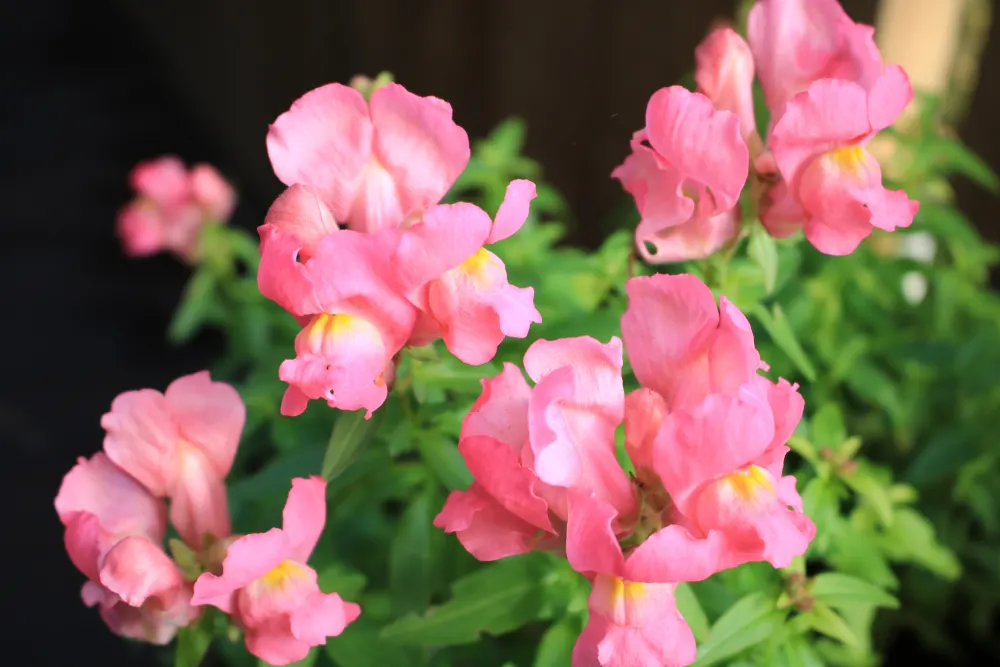 One of the best flowering plants to sow early is Antirrhinum majus. They are very slow growers, only producing flowers after 2-3 months of sowing seed.
One of the best flowering plants to sow early is Antirrhinum majus. They are very slow growers, only producing flowers after 2-3 months of sowing seed.
Snapdragons come in so many different colors and heights. Some reach four feet tall while dwarf varieties only come to a few inches in height.
If they are well watered, fed and deadheaded regularly, they can flower right into the fall too. Sow seed indoors 12 weeks before the last frost date in zones 5-11.
8. Marigolds
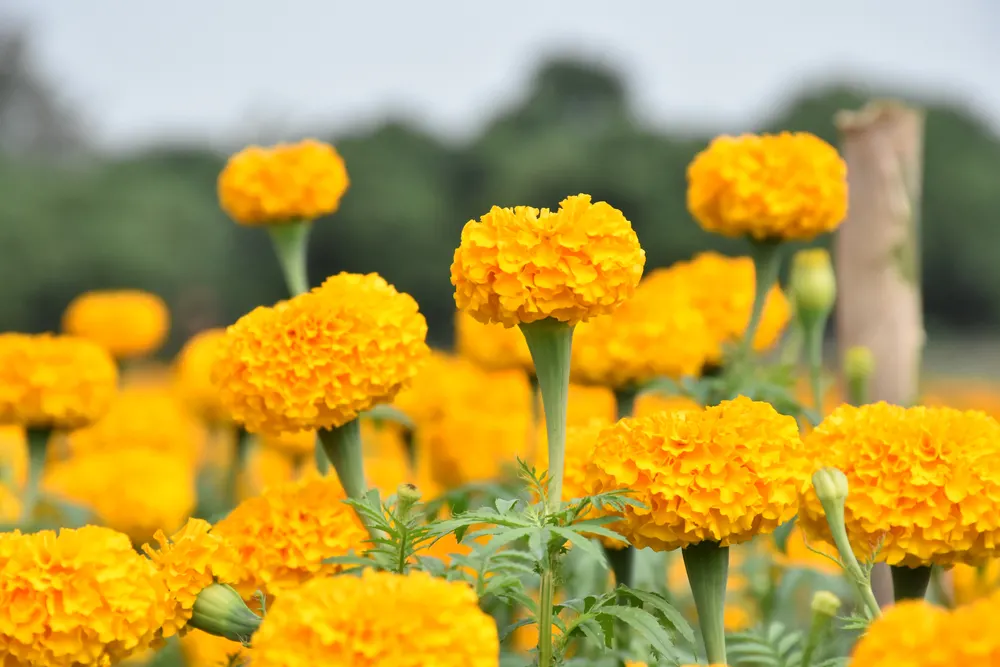 Often planted as a beneficial companion plant in the vegetable garden , marigolds are versatile plants with stunning bright colors.
Often planted as a beneficial companion plant in the vegetable garden , marigolds are versatile plants with stunning bright colors.
They can be grown just about anywhere as tough, low-maintenance plants that only need the occasional deadheading to keep them flowering right up until the first frost.
 They prefer full sun, becoming leggy in the shade. Luckily, they can be planted in poorer soils and still perform well. Sow seed 6-8 weeks indoors before the last frost date in zones 2-11.
They prefer full sun, becoming leggy in the shade. Luckily, they can be planted in poorer soils and still perform well. Sow seed 6-8 weeks indoors before the last frost date in zones 2-11.
9. Celosia
 Plumes of brightly colored feathery flowers of celosia form fields of fire when planted in a garden. Look for some of the unusual varieties like Celosia cristata , the cockscomb celosia, which look like colorful brains or coral when in flower.
Plumes of brightly colored feathery flowers of celosia form fields of fire when planted in a garden. Look for some of the unusual varieties like Celosia cristata , the cockscomb celosia, which look like colorful brains or coral when in flower.
They also attract attention as well as pollinators such as bumblebees. Celosia seed will take up to three months to form blooms, so start seed at least 6-8 weeks indoors before the last frost date for early blooms. Plant in zones 10-12.
10. Angelonia
 For hot and sunny areas, you can’t go wrong with angelonias. They produce a mass of delicate flowers, but the plants themselves are far from delicate, coping with periods of drought and hot weather.
For hot and sunny areas, you can’t go wrong with angelonias. They produce a mass of delicate flowers, but the plants themselves are far from delicate, coping with periods of drought and hot weather.
Start seeds at least 6 weeks before the last frost date in zones 8-11. They can take up to two months to germinate, so don’t worry if they don’t appear to be doing what they’re supposed to.
Plant out into garden beds eight inches apart for the best display. They come in a variety of colors from white to pink and purple and all shades in-between. Angelonias have a lovely fragrance and attract butterflies and bees to the garden.
11. Cleome
 Cleome, or spider flowers as they are commonly known, are tall annuals in white, pink, and mauve perfect for garden beds that need a bit of height for balance. They are quick-growing and will self-seed once established.
Cleome, or spider flowers as they are commonly known, are tall annuals in white, pink, and mauve perfect for garden beds that need a bit of height for balance. They are quick-growing and will self-seed once established.
They do best in full sun in rich garden soil and are drought tolerant. Sow seed 6-8 weeks before the late frost date. Plant in zones 10-11.
12. Sunflowers
 Showy sunflowers are easy to grow and are bound to make any gardener smile. These tall beauties are ideal for large garden beds or along a fence where they don’t need staking.
Showy sunflowers are easy to grow and are bound to make any gardener smile. These tall beauties are ideal for large garden beds or along a fence where they don’t need staking.
Sow sunflowers indoors 3-4 weeks before the threat of frost has passed. Plant three seeds in a degradable seed starting pot and sow every two weeks for a constant supply.
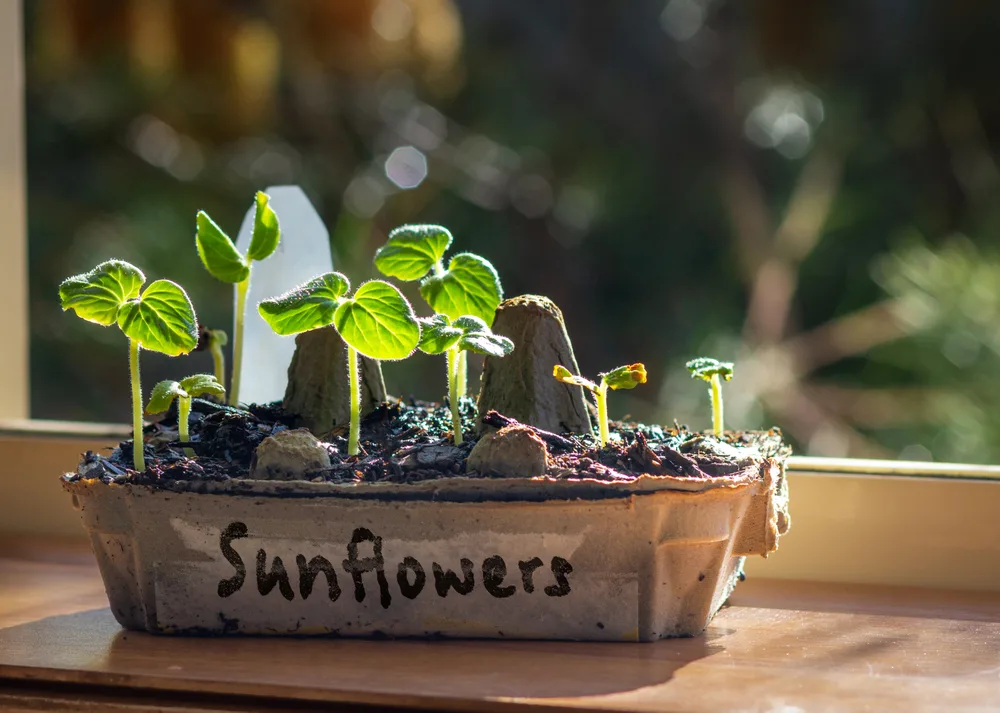 Keep the strongest plant as they grow and remove the weakest, leaving just one strong plant you can plant straight into the ground once the threat of frost has passed. They do not like their roots to be disturbed. Sunflowers can be grown in zones 4-9.
Keep the strongest plant as they grow and remove the weakest, leaving just one strong plant you can plant straight into the ground once the threat of frost has passed. They do not like their roots to be disturbed. Sunflowers can be grown in zones 4-9.


